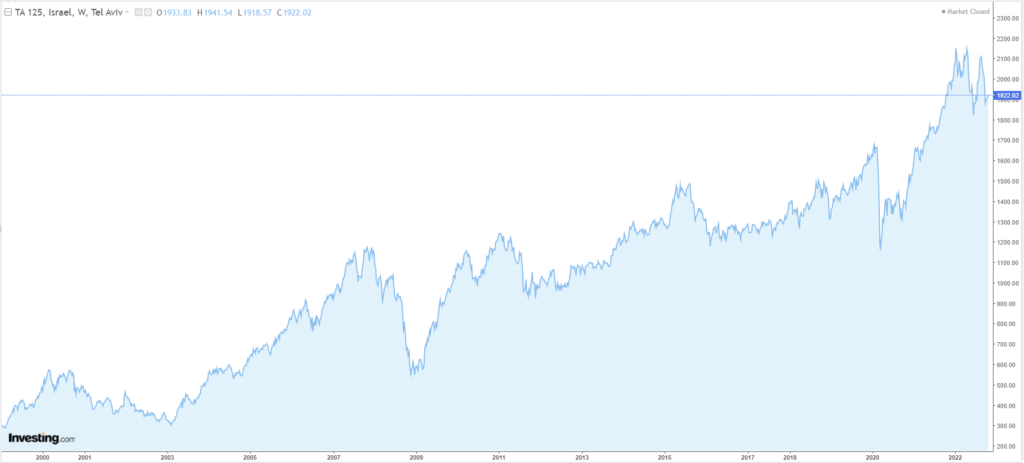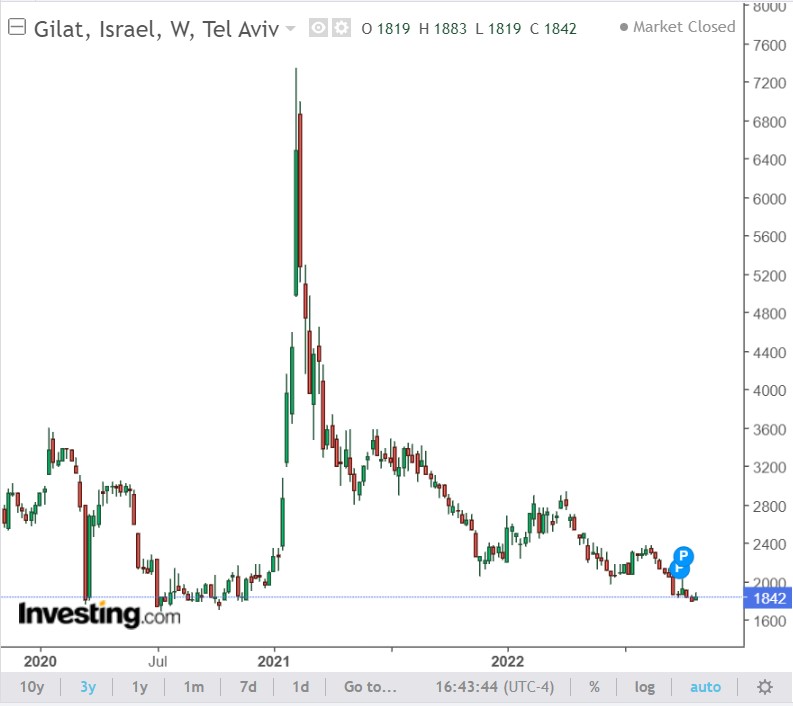This year was not short on market volatility, to put it mildly. Coming out of the pandemic and spike in inflation, add to it a major war in Europe, ensuing energy crisis, and you have factors that continue to weigh heavily on the financial environment that set the tone for the market.
Some may feel they would rather hold on to their cash and cut their losses short by selling portfolio holdings at exactly the wrong time. Others would stay in cash and shelve the idea of investing in the stock market all together, seeing an option to do otherwise as completely inappropriate.
At a time like this, it is important to stay calm and not let the emotions get the better of you. Throughout history, markets have had to go through periods of growth and economic crises, as well as periods of prosperity and recessions.

It would be unwise to fully abandon the notion of stock market investing if it was because of the reasons listed above. In these circumstances, it is advisable to re-evaluate the state of the economy and stock markets and keep planning—or start planning, if you haven’t yet—for your financial future using financial markets.
There are really two opposing ways of investing in the stock market – passive and active investing. Both compare their performance to popular benchmarks like the TA-35, TA-125 in Israel or the S&P 500, Dow Jones and Nasdaq in the U.S. Proponents of active investing seek to outperform the benchmarks while passive investment seeks to duplicate its performance.
Active investing typically often involves a high level of market analysis and skill in order to determine the best time for buying and selling securities.
If you have the time and resources (such as research software), you can do active investing yourself. Alternatively, you may hire professionals by using active exchange-traded funds (ETFs) or actively managed mutual funds.
It has to be remembered that even the most carefully structured actively managed portfolio can easily succumb to a turbulent market and lead to short-term losses without ongoing monitoring. Therefore, active investing is not advisable when it comes to managing long term retirement funds.
When actively investing, it’s very tempting to jump on the bandwagon and follow trends. This is probably why investors say “The trend is your friend”. Consider the investor who chose to buy into Gilat Satellite Networks (TASE: GILT) and did it at around 7,100 agorot at the end of January 2021. This was a time when famous portfolio manager Cathie Wood from ARK Investment Management added the stock to its holdings. However, by May of the same year, the price collapsed to just over 2,000, and on October 23, its price was 1,842 agorot. The difficulty with following a trend is identifying further upside and being aware of a reversal point.

So, what is passive investing? This approach is focused on buying and holding securities for the long term. The investor chooses a security and holds it with a long term view in mind. Instead of looking for individual shares, the passive approach normally involves buying the entire index via ETFs or mutual funds that simply follow the performance of major stock market indices (i.e. TA-35, S&P 500, FTSE 100, etc.)
Because this approach aims to duplicate market performance, there is no need to follow the investments closely. The other advantages of passive investment include much lower costs and reduced risk due to diversification across sectors.
Having said all of that, even though historically markets recovered from bear markets, there is a risk of a prolonged downturn. Therefore, it’s crucial to periodically reassess asset allocation over a longer time frame.
Last but not least, when creating an investment portfolio, it is important to consider one’s risk tolerance level. It is one of the most crucial factors, if not the most crucial. In practice, risk tolerance manifests not only as a capacity and desire to take investing risks, but it is also the investor’s capacity to absorb unpredictability in portfolio returns. Older investors typically have a lower risk tolerance. Younger investors on the other hand, given their longer anticipated time horizons, may absorb higher risk. This is not, however, a set rule. Regardless of age, the individual risk tolerance of each person should be assessed prior to making a decision whether to get involved into the stock market.
Why investing in Israel?
Investing in Israel has many advantages. Stable currency, low inflation environment (4-5% a year at present), high GDP growth relative to developed countries, availability of large gas reserves that give the country a certain degree of insulation from the energy crisis are all conducive to the growth in the stock market.
If you are not a professional investor, passive investing is a good option for you. Without involving research of individual companies, indices TA-35 and TA-125 give an excellent level of diversification in terms of stocks they comprise. TA-35 represents the largest companies listed in Israel by market cap. Both have a high exposure to the banking, real estate, and private consumption sectors and lack volatile industries like technology. However, both domestic and foreign investors agree that the TA-125 index is the best indicator of the Israeli economy.
If selecting a specific sector this year, banking looks particularly appealing. The reason being is because banks are benefiting from the present economic climate since interest rates are rising. This year started with almost zero returns on savings accounts and now it is approaching 4%. Banks are not quick to pass interest increases from the central bank to the savers, yet they fully charge the borrowers which increases banks’ margins and profitability. Therefore, including an ETF that tracks top Israeli banks is a decision worth considering.
If you are less risk tolerant, having exposure to corporate bonds of financially sound companies via Bond ETFs is one of the ways of achieving it. For instance, Tel Bond 60 index (CPI linked) is a good way to take advantage of current yield levels. If a year ago its yield to maturity was 1.5%, today it is around 2.3% and, assuming inflation remains around 4-5% the yields are of the same range.
Therefore, don’t let the news about the economy today distract you from considering the stock market as an option to invest your savings and grow your capital over the course of time. There is plenty of freely available information online and if need be, seek advice from the experts.
*Disclaimer: Data, information, opinions, forecasts in this article are the opinions of the writer and should not be taken as financial advice. The information is provided as a service to the reader.





0 Comments